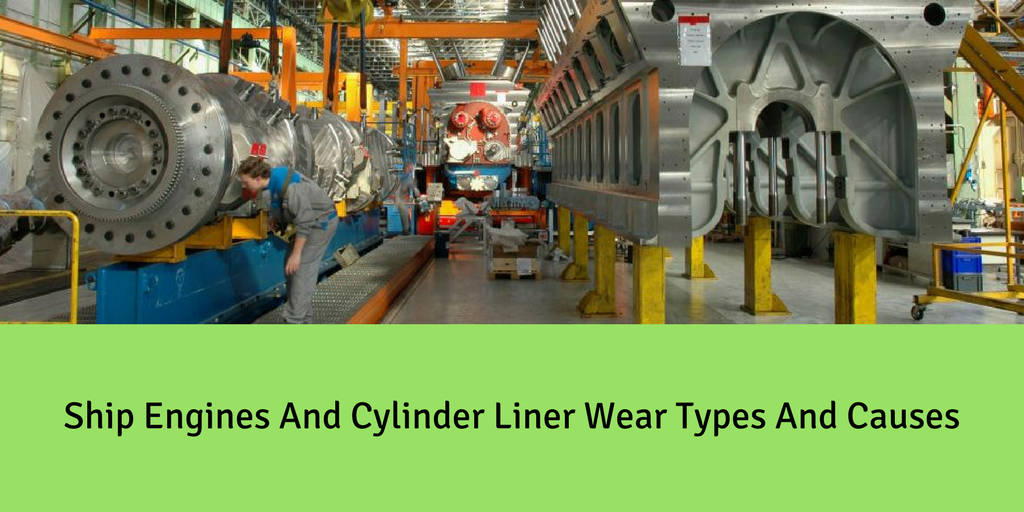Autos
Ship Engines and Cylinder Liner Wear Types and Causes

Cylinder liners form an integral part of the ship engine. Manufacturers of engine cylinder liners fabricate them using cast iron alloy before being machined internally and externally to the needed dimensions. Several types of liner wear caused in marine engines and most of the time, wear is located between the piston rings and the liner.
Machine does wear through time and marine diesel engines are not different. Even unreasonable construction of the engine cylinder causes wear. The upper part of the cylinder liner located near the combustion chamber temperature is high that spreads the lubrication bar. There are more structural reasons to damage-
- Acidic working environment causes chemical corrosion and the cylinder liner surface starts peeling off.
- Central wear of the cylinder liner increased due to mechanical impurities.
The misuse of ship will also cause engine cylinder liner wear. Even the mishandling of car causes cylinder liner wear. Air filter will become less efficient and after certain time, engine oil will become more contaminated and deliver improper performance.
Let’s discuss about marine two-stroke cylinder liner. The cylinder liners used in modern marine two-stroke engines are made of a CI alloy of chromium, vanadium, and molybdenum to increase the wear characteristics.
Lubrication methods have become more advanced. They now use new method of lube oil injection that is regulated by the management system. This helps the professionals to ensure the right amount of lubricating oil is injected for efficient results as the piston rings are passing the injection points.
Even if the management system maintains the liners, a well-serviced liner can be expected to have a wear rate up to 0.1mm/ 1000 hours of service. The reasons behind excessive wear are as under-
There are several factors that cause liner wear including:
- Abrasion – It is caused from metal particles, both from the splintering of fuel oil and piston rings, ash present in heavy fuels with catalytic particles act as an abrasive and cause wear.
- Friction – Friction wear is caused by inefficient lubrication. Cylinder lubrication can be affected by materials of construction, piston speed, surface finish, lubrication choice, and engine load.
- Corrosion – It happens due to burning of heavy fuels which are high in sulfur content.
- Adhesion – It is a form of local welding between piston ring particles and liner rubbing surface that cause speedy wear.
- Clover leafing – When the sulfur content is high in fuel oil, it causes cylinder liner clover leafing. It takes place between each pair of lubricating quills.
- Micro-seizure – This type of wear may not be destructive but it can become destructive if left untreated.
Engine cylinder liners suppliers and manufacturers have explained the types of wears in liners and their causes. If you have any query, ask in comments below.
Read More Related This :
How Cylinder Liner in Marine Diesel Engines are Designed
The cylinder liner of any small automotive looks no different to the tumbler that you use for drinking water. However, when it comes to ships, the engine cylinder liners are large that two thin people can fit inside it.
-

 Tech11 years ago
Tech11 years agoCreating An e-Commerce Website
-

 Tech11 years ago
Tech11 years agoDesign Template Guidelines For Mobile Apps
-

 Business6 years ago
Business6 years agoWhat Is AdsSupply? A Comprehensive Review
-

 Business10 years ago
Business10 years agoThe Key Types Of Brochure Printing Services
-

 Tech8 years ago
Tech8 years agoWhen To Send Your Bulk Messages?
-

 Tech5 years ago
Tech5 years ago5 Link Building Strategies You Can Apply For Local SEO
-

 Law5 years ago
Law5 years agoHow Can A Divorce Lawyer Help You Get Through Divorce?
-

 Home Improvement6 years ago
Home Improvement6 years agoHоw tо Kеер Antѕ Out оf Yоur Kitсhеn































